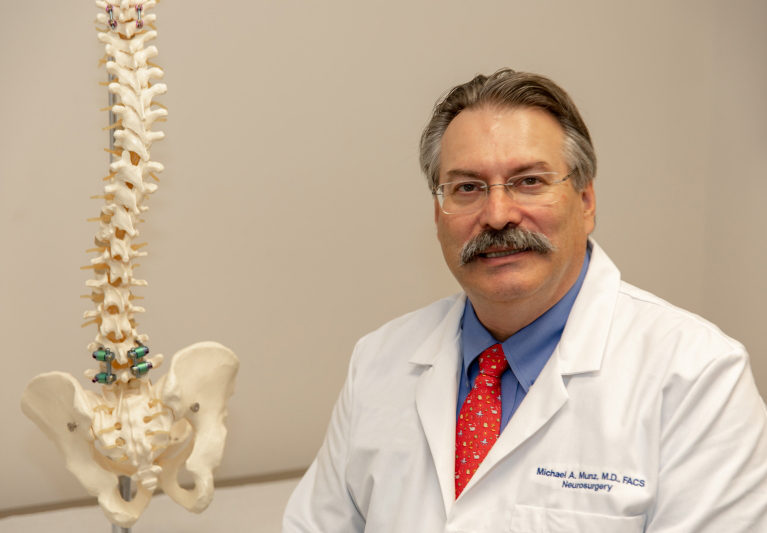
According to the American Cancer Society, “you should never accept pain as a normal part of having cancer. All pain can be treated and most pain can be controlled or relieved.”
That said, people suffering from late-stage metastatic bone cancer might well think relief from often excruciating pain can only be achieved through heavy sedation.
Dr. Michael Munz, a neurosurgeon and spinal surgeon at Vero Neurospine, believes there’s often a better way – a minimally invasive procedure with a device called the OsteoCool by Medtronics.
Metastatic bone cancer is a complex disease. To start with, it’s a kind of “secondhand” cancer.
When cancer spreads from other parts of the body such as the breast, lungs, kidneys or prostate to your bones, it is called “bone metastasis.”
The Mayo Clinic says “nearly all types of cancer can spread (metastasize) to the bones,” causing pain and fractured bones, particularly in the vertebrae.
The Neurological Institute of New York at Columbia University Medical Center adds that “these fractures are not only painful, but they may put harmful pressure on the nearby nerve roots or on the spinal cord itself.”
It’s that pressure on the nerve roots and/or the spinal cord that can create downright debilitating pain.
“It may not be possible to cure bone metastases,” the American Cancer Society reports, but adds “there are still things that can be done to help you feel as good as possible for as long as possible.”
“Nowadays,” Munz continues, “what we’re doing [to treat bone cancer] is what’s called augmentative surgery.
“What does that mean? It means instead of going in and removing the whole bone, we can go in and put some needles into the bone and burn [the tumor or tumors] and then after it’s burned, we put in some cement.”
Cement? Yes – the same kind used to cement a prosthesis to your bone when hip or knee surgery is done, according to Munz.
In bone cancer cases, that cement fills the void where the tumor or tumors had been, which keeps the bone strong and the pressure off of all those nerve roots.
Ready for some good news? Munz says this minimally invasive procedure is typically done on an outpatient basis.
“There are no stitches or anything,” Munz explains enthusiastically. The incisions, he continues, “are too small to put a stitch in.”
The OsteoCool needles, the radio frequency tumor removal and the cementing of the bone or bones are all done through tiny ports and, according to this Mayo Clinic Fellowship-trained neurosurgeon, patients who opt for this approach typically get “great relief of pain.”
Interventional Oncology agrees. It says these outpatient procedures “have been shown to achieve pain relief within hours of the procedure.”
That’s not the end of the story, however.
As Munz points out, “typically these patients need some adjuvant therapy. Sometimes chemotherapy and typically radiation therapy” afterwards, so he concludes by saying “we work with both medical oncologists and radiation oncologists” to monitor all late stage metastatic bone cancer patients.
Originally cleared for use solely in the spine, the FDA now permits the OsteoCool system for palliative treatment in all the bony anatomy of the body.
Dr. Michael Munz is at Vero Neurospine at 1040 37th Place, Suite 101 in Vero Beach and is affiliated with the Steward Medical Group. His phone number is 772-205-3345.



